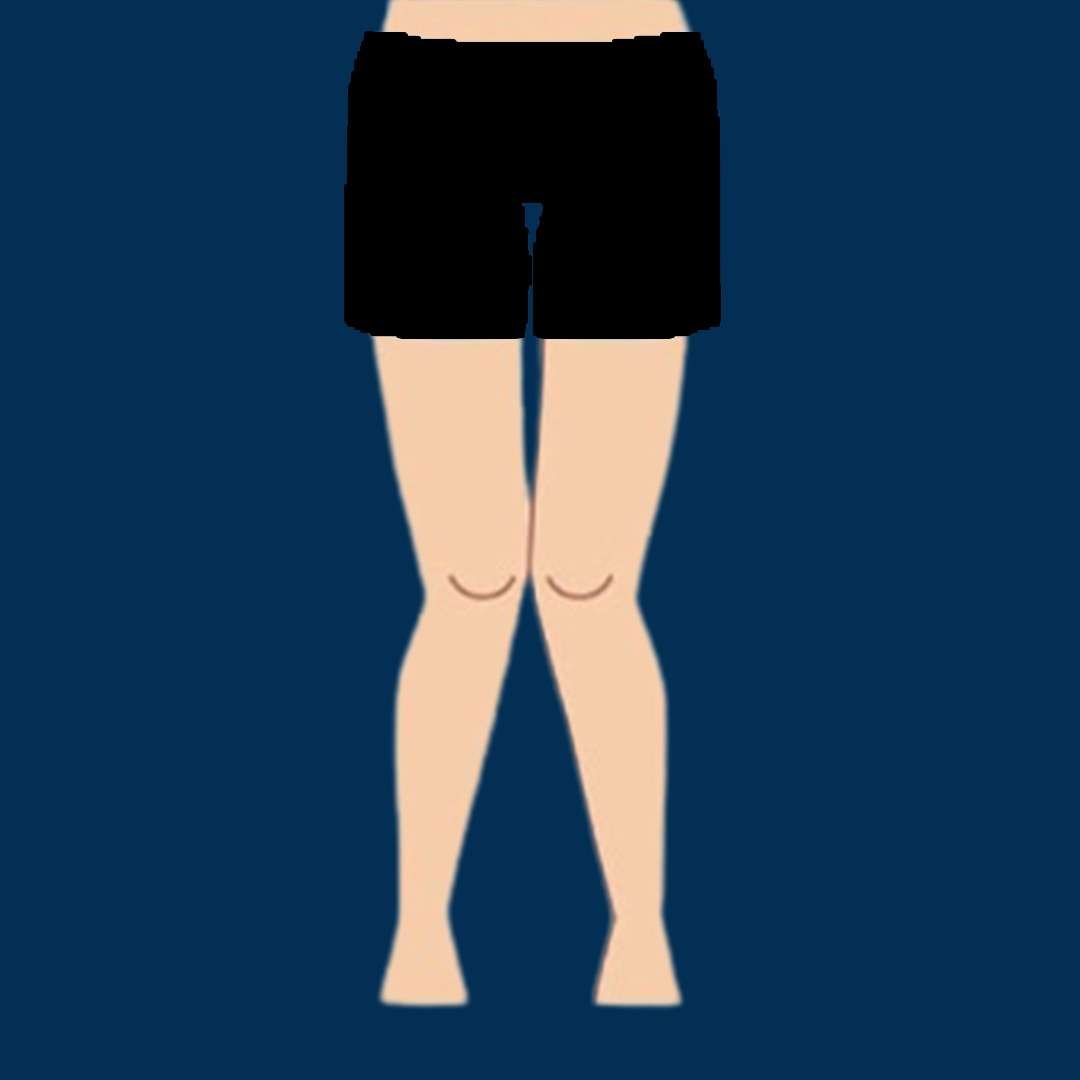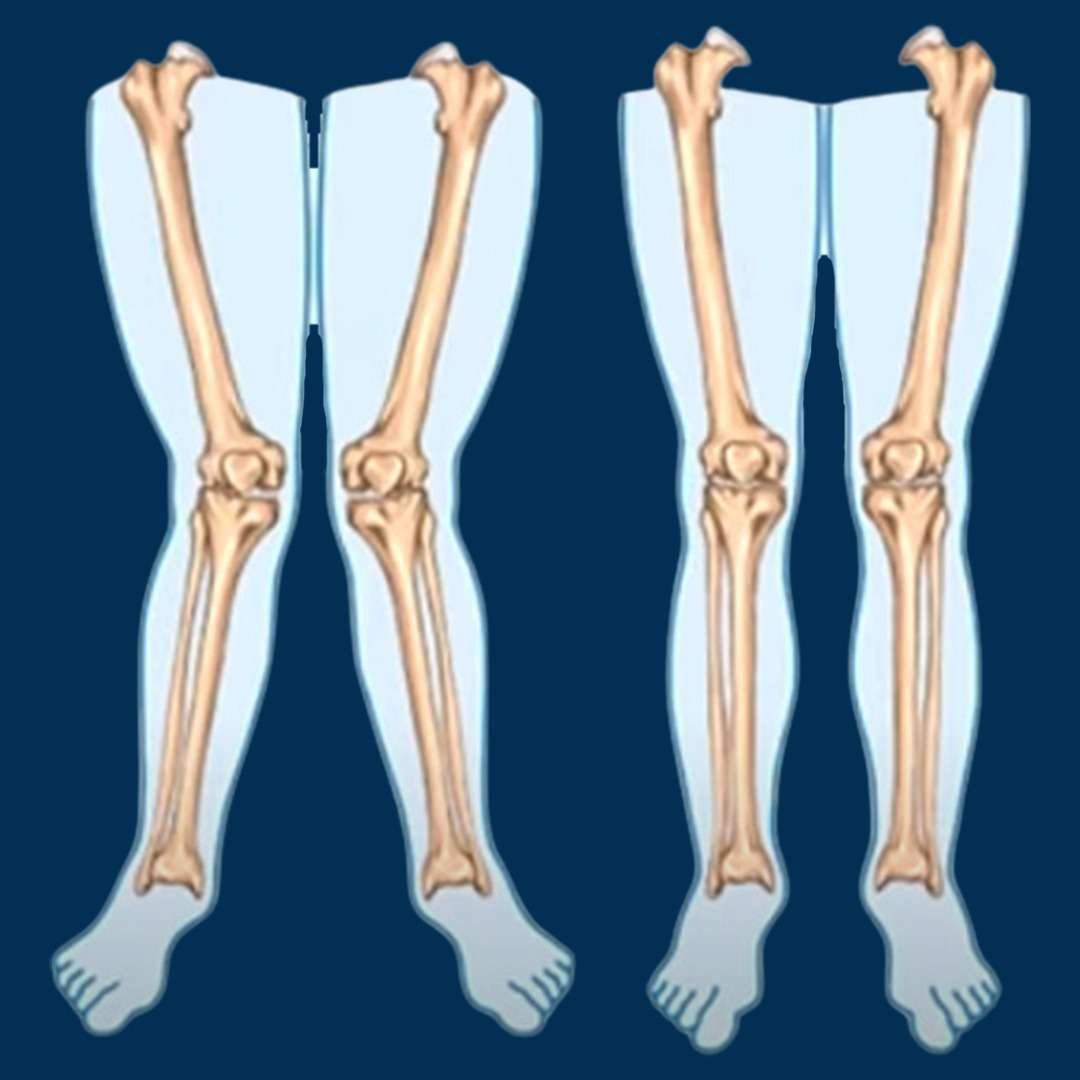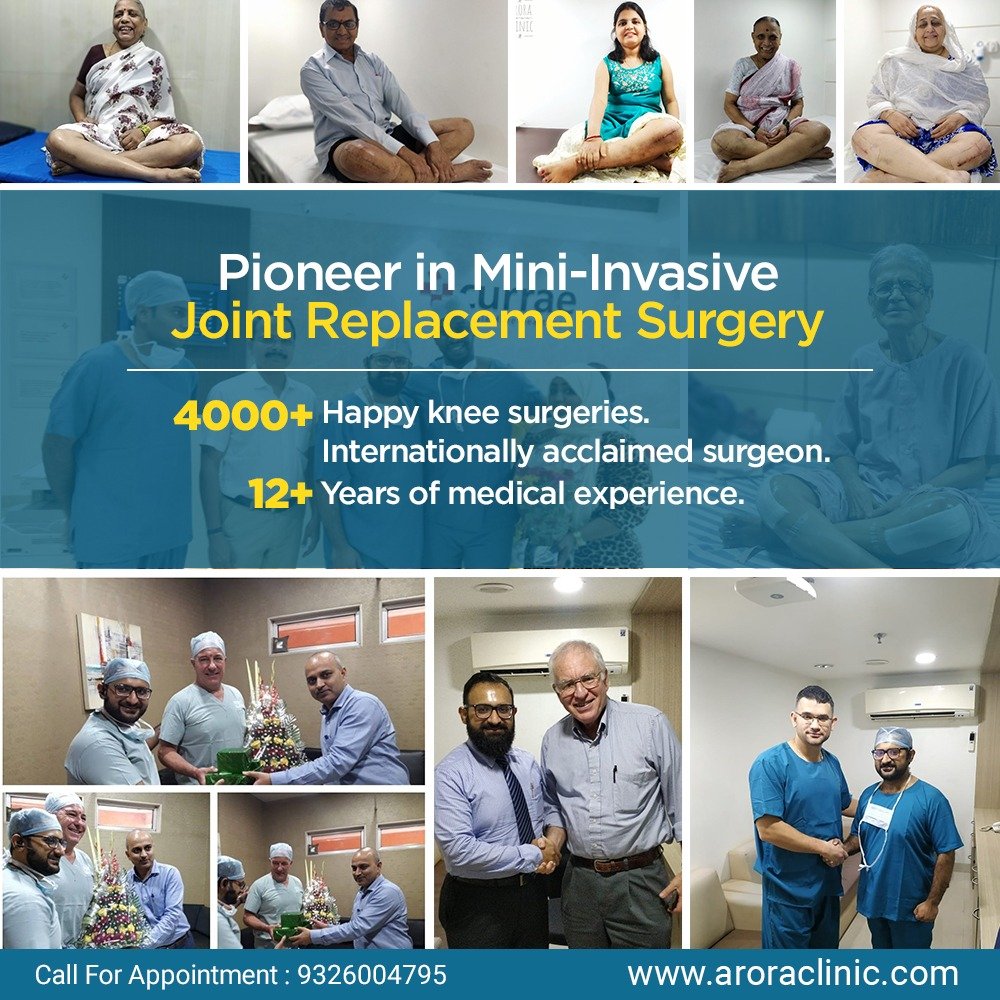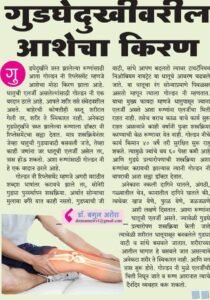

Knock knees (genu valgum) is a condition where the knees turn inward or inside, while the ankles are separated. This condition is somewhat more common in females, however males can also suffer from it.
Knock knees deformity are a normal an aspect of children’s development and growth. A majority of young children have knock knees at some extent over a long time, but in certain children, it’s more obvious.
In rare instances knock knees may be an indication for an existing bone condition in particular when the condition is first noticed in a child who is 6 or more.
Knock Knee (also known as “Knee deformity,” “knock-knee syndrome,” , Knee bend inward “ “knocked knee” or “genu valgum“) is an unbalanced position around the knee, which can be a problem for individuals from all different ages. If not treated it could lead to joint pain and Knee degeneration. Correcting the deformity can improve knee mechanics , ability to walk, lessen discomfort and stop an accelerated progression of damage to the knee.
Here in is this blog- we had covered following questions and queries regarding Knock Knees.
The Knock Knee is an situation where knees bend downwards and meet and “knock” against one another even if the person sits with legs separated. This puts excessive pressure on the outside of the knee. This could cause injury and pain in the course of time.
Knock knee can be bilateral – it affects both legs. However, in certain cases it could be limited to one knee.
knock knees cause any discomfort?
A knee injury that is temporary can be typical of the growth stage in the development of most children. It usually gets better as the child develops. Knock knees that last beyond six years If they are very severe or effect one leg over the other, could be an indication of knock knee syndrome.

The majority of children experience normal angular movements in their legs when they grow. The majority of children are bowlegged until they walk about 12-18 months. Between two and three years old the legs of children have typically began to curve inwards which causes them to knock-kneed. During normal growth when the child’s legs begin to be straight by the age of between seven and eight.
Knock knees that are not part of the normal development patterns could be due to illness, infection or other ailments. If the leg angle from the hip to the foot is beyond normal patterns, gets worse with time, or appears on just either side, it suggests someone is suffering from an even more severe form of knock knees. more examination by an orthopedic surgeon might be required. Surgery could be required to treat the problem Knock Knee Surgery available in Mumbai Thane at Arora Clinic.
Knock knee may be the result of an underlying developmental or congenital condition or develop following an infection or traumatic knee injury. The most common causes of knock knees are:

metabolic disease
renal (kidney) insufficiency
physical trauma (injury)
arthritis, specifically in the knee
bone inflammation (osteomyelitis)
Rickets (a bone disease that is caused by a deficiency in vitamin D)
congenital (inborn) conditions
growth plate injury
benign bone tumors
fractures that heal and cause the appearance of a deformity (malunion)
Overweight or obese could cause extra stress on knee joints and cause knock knee.
The most common symptom associated with knock knee is a dislocation of an individual’s ankles when their knees are placed close. Other signs, such as discomfort, are usually due to walking gait (manner for walking) that people who suffer from knock knees. The symptoms could include:
The patient may also experience other signs of an underlying issue that’s at the root of the knock-knee-syndrome. For people of all ages groups suffering from knock knees the knee or one of them are overloaded in a way that is not normal. The force that is too much may cause discomfort, fractures knee instability, and eventually decline of knee joints. Particularly, adults who have been knocked-kneed for a long time often over-exert on the exterior (lateral space) of their knee and then stretch the inner (medial collateral ligament MCL). These forces can result in knee pain and ankle instability (including the complex patella femoral instability) along with arthritis.

An orthopedic doctor will look over the patient’s medical history as well as family history, as well as any existing medical conditions, and the current state of health. They’ll also conduct an examination of the gait and legs. Standing-alignment X-rays or EOS images will aid in confirming the diagnosis. These are radiological pictures of the leg from the hip down to the ankle that help the doctor determine the exact position and the mechanical direction for the anomaly.
Knock Knee Treatment available in Mumbai thane is For minor instances of knock knee in adolescents or children bracing can help reposition the knees. If this is not successful or in the case that the patient is adult at the moment of diagnosis the knee-realignment , Knee Osteotomy can be used to delay or avoid the need for knee replacement.
If the knock knee is the result of an infection or disease that has a root The cause of the problem is addressed prior to any orthopedic surgery commences. Treatment for minor cases of knock knee in adolescents or children might include braces that help bones develop in the proper location.
If there is no gradual correction to take place, Orthopedic surgery might be suggested. For children who are growing surgical procedures, guided growth may be performed to stimulate the leg to grow straight.


In extreme cases, and in the case of skeletally mature adults and adolescents (any person with bones that aren’t growing) an osteotomy that is where bone is cut, then realigned – is a possibility for straightening the legs. Most of the time it is the leg’s femur (thighbone) can be fixed. This is called an osteotomy of the distal femur (DFO). Certain patients might benefit by a tibial osteotomy which is when the tibia (shinbone) is realigned. Some cases might require both a femoral as well as a the tibial osteotomy. (Find the surgeon who is able to treat the knock knee.)
If Knock Knee is associated with cartilage degeneration, then Total Knee Replacement Surgery will be best option for Knock Knee patients in mumbai.
If knock knee problem progresses then it causes a gap between the knees joints due to which patients cannot walk, in such case, Total Knee Replacement Surgery is very helpful.
Total Knee Replacement Surgery with Golden implant corrects the knee alignment and makes the leg straight.
If you are suffering from Knock knee or looking forward to consult Knock Knee Specialist Orthopedic doctor in Mumbai or Thane then Contact Dr Bakul Arora’s, Arora Clinic –
For appointments- call on 93260 04795 / 93729 72839
Visit website- www.aroraclinic.com
knock knees | knock knees treatment | what is knock knee | knock knee test | knock knee correction | knock knee problem | knock knee syndrome | how to check knock knees | knock knees causes | genu valgum | genu valgum deformity
We are really honored to receive this and we will continue to serve the society better than ever We aim to provide the world-class Knee/Hip Replacement Surgical (Minimal Invasive Surgery) treatment to every patient suffering from knee or hip pain and at the same time make their life pain-free and happy.

Dr. Bakul Arora’s Joint Replacement Clinic is also known as “Arora Clinic” which is located at Hiranandani Meadows in Thane, within a very convenient proximity to Mumbai. Arora Clinic dedicated clinic for Knee Replacement surgery and all kinds of Orthopaedic treatments and surgeries
The Arora Clinic is one of the most advanced Orthopaedic clinic in Thane region and dedicated to providing the best, personalised healthcare with a breadth of surgical and medical expertise. Arora Clinic offers the modern surgical treatments like “Minimally Invasive Knee Replacement Surgery” which is also called as “PAIN-LESS SURGERY” for any complex knee diseases.
Dr. Bakul Arora is a Consultant Joint Replacement & Orthopaedic Surgeon is one of the leading Knee Replacement Surgeon in Thane and Mumbai with over 4000+ successfully surgeries. Dr. Bakul Arora specialises in Mini-invasive techniques which offer multiple benefits to patients. He does the surgery using Subvastus approach for Knee Replacement surgery and Direct Anterior Approach for Hip replacement Surgery . This new techniques has many advantages for patients like its pain-less , stich-less surgery, patients walks on the same day after surgery, no blood loss, faster recovery etc.


Knee replacement is required for advanced arthritis of the knee joint, producing painful limitation of movements and restriction in activities of daily living. Knee replacement as a solution should be offered when all non–surgical methods of treatment failed and painkiller medicines and injections also failed to reduce the Knee and hip pains.
Knee replacement can be total or unicondylar, depending on the number of compartments involved. Among the total knee replacement, there are two popular designs- Cruciate Retaining, and Posterior Stabilized. The decision for the design is best taken by the operating orthopedic surgeon based on the integrity of ligaments. Patella resurfacing as a routine is a debatable subject.
Yes, most knee replacement surgeries are minimally invasive, with numerous benefits to the patient, including smaller incisions, less tissue trauma, bleeding and post–operative pain, shorter hospital stays, faster recovery, and earlier return to work and activities — in weeks rather than months. Advantages of Minimally Invasive Knee Replacement Surgery. Patients Start walking in few hours of surgery. Patients start climbing the staircase from second day of his surgery. Patients Discharge with in 3 Days from the Hospital after surgery. No blood loss during the surgery, no blood Transfusion required. Less Physiotherapy.( No Physiotherapist required for home) Less Antibiotic. Stitchless Surgery. Recovery time is just two – three week.
Bilateral knee replacement in the same sitting, can be performed if both the knee joints are damaged to the same extent, however, the medical condition of the patient, and bone quality must be kept in consideration.
Surgery through Minimally Invasive technique patients start walking on the same day and staircase climbing starts from the second day of surgery. Patients can resume his work after 3 – 4 week.
The most significant risks include Infection, Deep vein thrombosis,and Aseptic loosening of implants. The risks correlate with the co-morbid medical condition, and must be discussed with the patient before surgery.
Patients normally require hospitalization for 3-4 days in single knee replacement, and up to 5-6 days in both knee replacement surgery
A single knee replacement takes approximately 90 min- 2 hours. Both knee replacement surgery takes approx 2-3 hours.
Years ago, knee replacement surgery was reserved for elderly patients due to a high complication rate and lack of implant durability. Modern techniques have allowed orthopaedic surgeons to base surgical decisions on a patient’s pain and disability, and not necessarily chronological age. Most patients who undergo knee replacement are between the ages of 50 and 80, but surgeons evaluate patients individually and primarily on their physiologic age and demands.
Patients can resume his/her light work after discharge from the hospital, no need for rest.
Patients are given epidural anesthesia for surgery, and post op pain relief. They are expected to follow instruction from physiotherapist regarding muscle training.




⇒ Wockhardt Hospital Mumbai Central, Mira road & Vashi
⇒ Apollo Spectra Hospital, Tardeo and Chembur
⇒ Cloud 9 Hospital, Malad
⇒ Criticare Hospital, Andheri
⇒ Arora Clinic, Hiranandani Meadows
⇒ Bethany Hospital, Vasant Vihar
⇒ Currae Hospital, Kapurbawdi
⇒ Horizon Hospital, Ghodbunder
⇒ Infinity Hospital, Majiwada
⇒ Lakecity Hospital, Khopat
⇒ Oscar Hospital, Majiwada
⇒ Drone Hospital, Bhiwandi
WhatsApp us